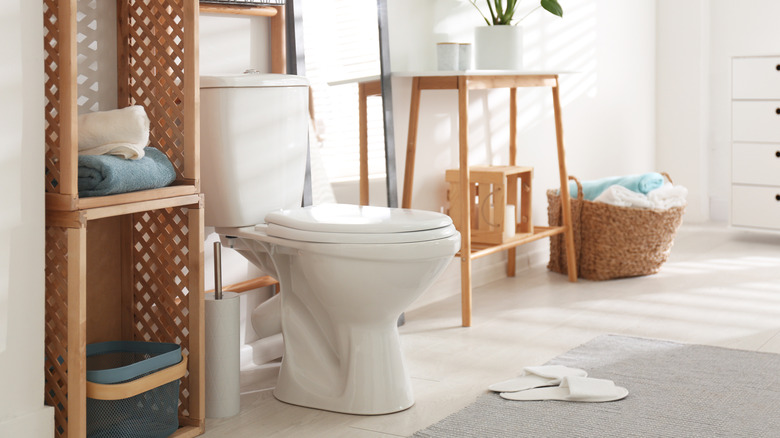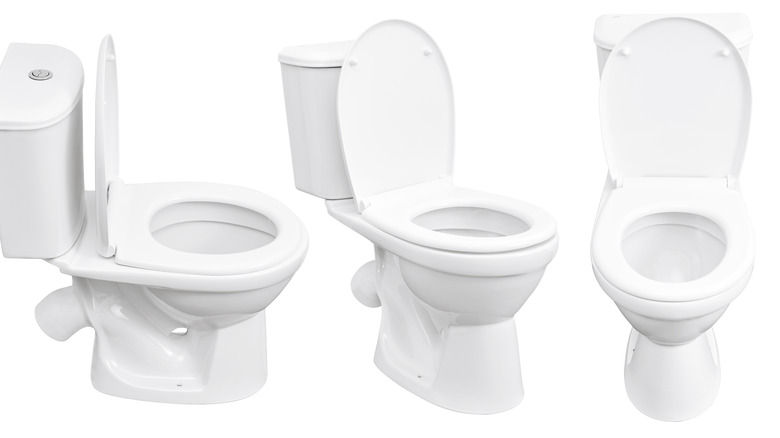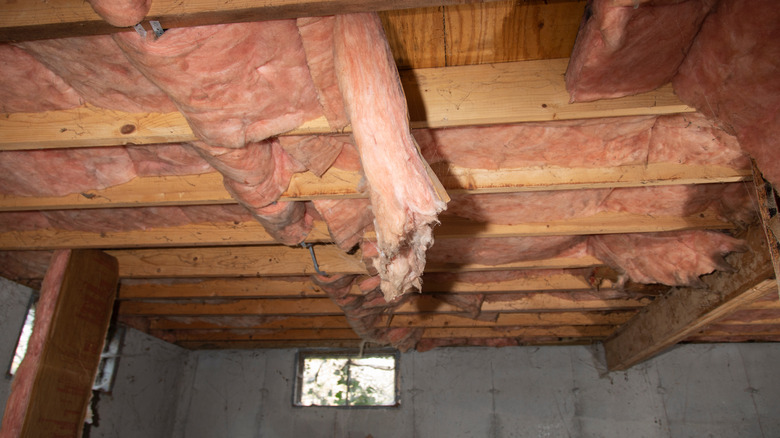What It Could Mean If Your Toilet Is Wobbling
A wobbling toilet can indicate a number of common household problems. These can be simple issues that are fixed with an hour of DIY effort, or they may signal a much larger problem that will require the services of a professional contractor, plumber, or both.
The wobble in your toilet can be a source of annoyance, but you may not even notice it at first if the problem has not yet become very severe. Once a wobble in your toilet becomes apparent, though, you'll need to tackle the solution as quickly as possible. Typically, a wobbling toilet is a minor fix, which gives many homeowners the ability to breathe a sigh of relief. Yet a wobble can signify a range of problems running the gamut of severity. You simply can't wait to find out what kind of issue you're dealing with. The Spruce reports that the typical rocking in a toilet seat comes over time due to the continued deterioration of easily replaceable parts. Wax seals that keep the space underneath your toilet dry and clean are often the culprit, and a replacement will only take a few hours of your time, making this an important and yet straightforward addition to a weekend to-do list.
How to repair loose bolts or wax seals
SF Gate reports that toilets may wobble simply as a result of poor fastening to the floor. Often, a wobbling toilet indicates loose bolts or an issue with your overall fastening of the toilet to the underlying plumbing. Over time, the bolts that secure your toilet to the floor can become loose and allow the fixture to wobble or rock back and forth. When approaching any toilet fix, it's a good idea to start by checking the bolts to see if this is the cause of the issue. The Spruce recommends using pliers or a wrench to get a good grip on each bolt. You can fix most wobbling issues by tightening the bolts to securely fasten the toilet to the floor. However, if this doesn't solve your problem, then you'll need to move on to the second leading cause of a toilet wobble: An ill-fitting or failed seal underneath the bowl.
SF Gate suggests that the wax seal connecting your toilet to the plumbing beneath it can be improperly installed or fail over time. Alternatively, the floor can settle over the years, per The Spruce, leading to a once flush toilet resting higher than it should—even with properly fastened bolts. You'll need to reset or replace the seal by using shims to position the toilet while applying a new layer of grout along the edge. This is a fix that most homeowners can accomplish.
Fixing rot in the subfloor
If you remove the toilet bowl from the floor only to find a wax seal that remains intact, then you may be looking at a much more pervasive issue. SF Gate reports that a water leak from your sink, shower, the toilet itself, or even perhaps elsewhere in the home can erode the subfloor's integrity. Sometimes, this can be remedied by focusing on drying and dehumidifying the room. However, the solution isn't always this simple. A rotting subfloor can lead to a failure of the floor itself, per Reader's Digest. The bathroom is a space of the home that's consistently exposed to humidity changes and increased moisture levels, and this can wreak havoc on the stability and health of the home's essential structures in ways that other areas of the property simply don't have to endure.
Extreme How-To reports that fixing a subfloor resembles cancer surgery. The first phase of this repair work is one of discovery, as it's typically impossible to tell the extent of the damage until you've started to tear away the rotted plywood subfloor layer. Likewise, you can't stop removing damaged wood until you reach the end of the rot. Contractors are well versed in repairing subfloors and restoring a home to good order. Although it's certainly possible to take on this project yourself, it's important to be prepared for the worst when it comes to the scope of the damage.


